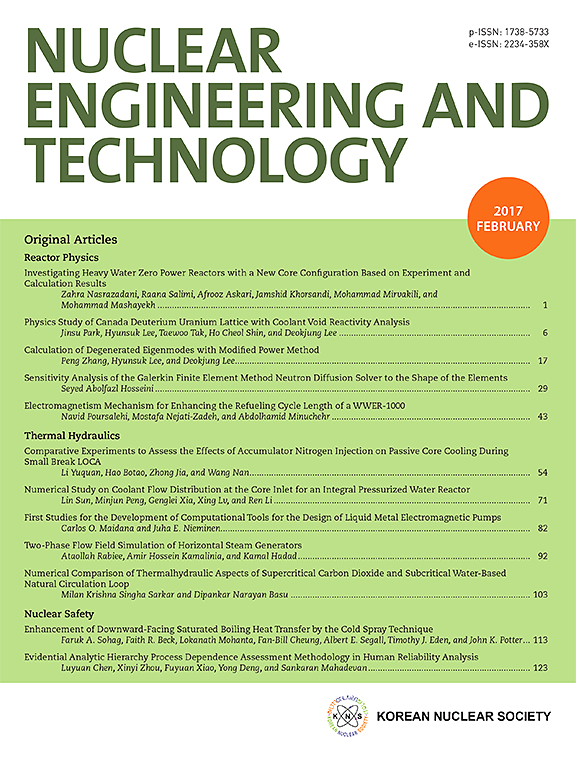Insights into irradiation creep coefficient in nuclear graphite from machine learning
IF 2.6
3区 工程技术
Q1 NUCLEAR SCIENCE & TECHNOLOGY
引用次数: 0
Abstract
Understanding irradiation induced creep in nuclear graphite is critical for the service life extension of current reactor fleet and the technological advancement of next generation nuclear reactors. Nevertheless, qualifying a new graphite grade with respect to irradiation creep requires years of testing and expensive facilities for experiments. Here for the first time, we applied machine learning (ML) algorithms to investigate the irradiation creep coefficient in the secondary stage of graphite creep in hope of gaining new insights and expediting the qualification process. Four ML models were trained on a small dataset with temperature and materials properties as input. The gradient boosting regression model exhibits the best predicting performance. The ML models indicate that temperature and Young's modulus are the most important parameters in the determination of creep coefficients while the rest properties have much weaker impact. These findings align with previous theories and corroborate a creep mechanism governed by dislocation climb, demonstrating the potential of ML in improving the workflow of graphite qualification for advanced reactors.
基于机器学习的核石墨辐照蠕变系数研究
了解辐照诱发的核石墨蠕变现象,对于延长现有反应堆的使用寿命和推进下一代核反应堆的技术进步具有重要意义。然而,根据辐照蠕变来确定一个新的石墨等级需要多年的测试和昂贵的实验设备。在这里,我们首次应用机器学习(ML)算法来研究石墨蠕变第二阶段的辐照蠕变系数,希望获得新的见解并加快鉴定过程。在一个以温度和材料属性为输入的小数据集上训练了四个ML模型。梯度增强回归模型的预测效果最好。ML模型表明,温度和杨氏模量是确定蠕变系数的最重要参数,而其他性能对蠕变系数的影响要小得多。这些发现与先前的理论一致,证实了位错爬升控制的蠕变机制,证明了ML在改善先进反应器石墨鉴定工作流程方面的潜力。
本文章由计算机程序翻译,如有差异,请以英文原文为准。
求助全文
约1分钟内获得全文
求助全文
来源期刊

Nuclear Engineering and Technology
工程技术-核科学技术
CiteScore
4.80
自引率
7.40%
发文量
431
审稿时长
3.5 months
期刊介绍:
Nuclear Engineering and Technology (NET), an international journal of the Korean Nuclear Society (KNS), publishes peer-reviewed papers on original research, ideas and developments in all areas of the field of nuclear science and technology. NET bimonthly publishes original articles, reviews, and technical notes. The journal is listed in the Science Citation Index Expanded (SCIE) of Thomson Reuters.
NET covers all fields for peaceful utilization of nuclear energy and radiation as follows:
1) Reactor Physics
2) Thermal Hydraulics
3) Nuclear Safety
4) Nuclear I&C
5) Nuclear Physics, Fusion, and Laser Technology
6) Nuclear Fuel Cycle and Radioactive Waste Management
7) Nuclear Fuel and Reactor Materials
8) Radiation Application
9) Radiation Protection
10) Nuclear Structural Analysis and Plant Management & Maintenance
11) Nuclear Policy, Economics, and Human Resource Development
 求助内容:
求助内容: 应助结果提醒方式:
应助结果提醒方式:


